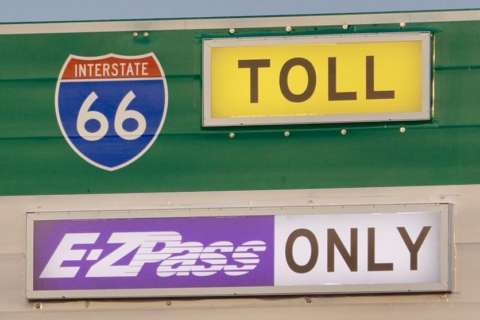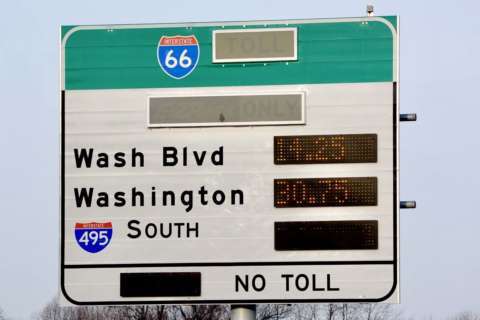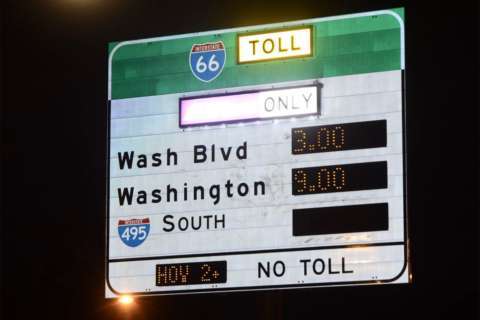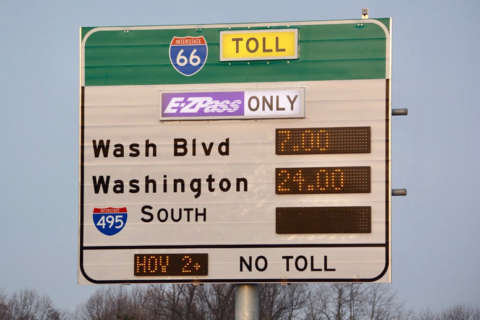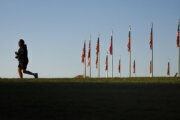WASHINGTON – In the first four days of tolls for solo drivers at rush hour on Interstate 66 inside the Beltway, commuters paid more than $100,000 each day, data obtained by WTOP show.
The money supports the tolling system and transit options to provide alternatives to paying the toll.
Initial calculations by the Virginia Department of Transportation show drivers paid a total of:
- Monday AM – $89,777
- Monday PM – $42,980
- Tuesday AM – $110,531
- Tuesday PM – $42,515
- Wednesday AM – $60,649
- Wednesday PM – $40,940
- Thursday AM – $76,069
- Thursday PM – $50,112
Overall, 25.1 percent of morning vehicle trips went all the way from the Beltway to Rosslyn, while 20.7 percent of afternoon trips went all the way from Rosslyn to the Beltway, VDOT Tolling Director David Caudill told WTOP Tuesday.
It is still very early in the process, so it is too soon to say whether the current numbers are where traffic will settle long-term.
While those drivers using the entire stretch of I-66 inside the Beltway can drive up the average tolls, more than three out of four drivers are using only part of the facility, and that brings down the average toll paid.
Toll costs
In the most extensive data yet about the first week of toll prices, VDOT said the morning tolls actually paid by drivers averaged between $9.23 and $12.87 on the first four days of tolling last week.
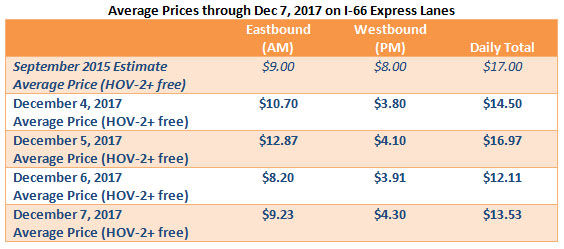
Afternoon average prices paid for solo drivers ranged from $3.80 to $4.30 between Monday and Thursday.
“A better distribution of trips across the four-hour period, the lack of a merge between two highways westbound on I-66, and a variety of P.M. destinations contribute to lower average prices in the afternoons,” VDOT said in a statement.
Just one to two percent of afternoon drivers paid a toll more than $10.
VDOT said 28 drivers paid the highest toll – a $40 toll for the entire length of the corridor on Tuesday morning.
“This price was not realized throughout the remainder of the week as morning trips are being more evenly distributed across the express lane hours,” VDOT said.
More than one in five morning drivers paid a toll of more than $10 in the first four days, even including the carpoolers who rode free
Combined, VDOT said, the average morning price paid over the first four days was $10.25, while the average afternoon price paid was $4.03. Around 14,000 vehicles are using the road during each morning rush-hour period – eastbound from 5:30 a.m. to 9 :30 a.m. – while around 16,000 vehicles are using the road during each afternoon rush hour – westbound from 3 p.m. to 7 p.m.
The road is free for motorcycles, buses and drivers with two or more people in the car and an E-ZPass Flex switched to HOV mode.
About 40 percent of vehicles had an E-ZPass Flex switched to HOV mode during morning rush hours, while closer to 33 percent of vehicles rode free in the afternoon rush hours.
On Monday morning, 39 drivers paid the highest $39.50 price to drive the entire corridor. Tuesday, 28 paid the $40 toll. Wednesday, 34 paid the highest toll of $23.50. Thursday, 18 paid the highest morning toll of $26.75 to drive the entire corridor.
In the afternoons, 33 drivers paid the highest Monday afternoon toll of $12.50, 46 paid the top afternoon toll of $10.75 on Tuesday, 28 paid the top afternoon toll of $13.5 on Wednesday and 25 paid the top $21.50 toll to drive the length of the corridor from Rosslyn to the Beltway Thursday.
When including the time outside of the old, shorter HOV hours, VDOT says traffic is now moving faster during the new four-hour restricted periods than it was a year ago.
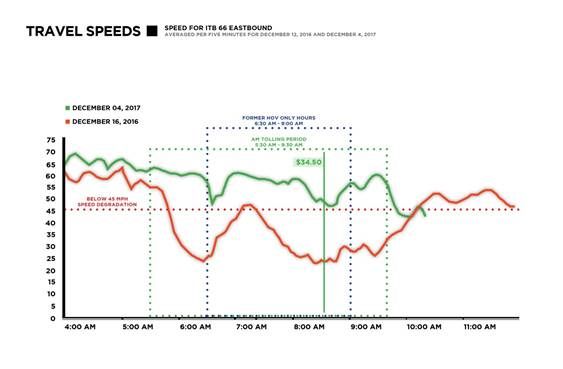
VDOT says there were no significant changes to traffic on Routes 7, 29 or 50 over the first four days despite a slight increase in the number of vehicles.
The latest update does not include information about Route 123.

